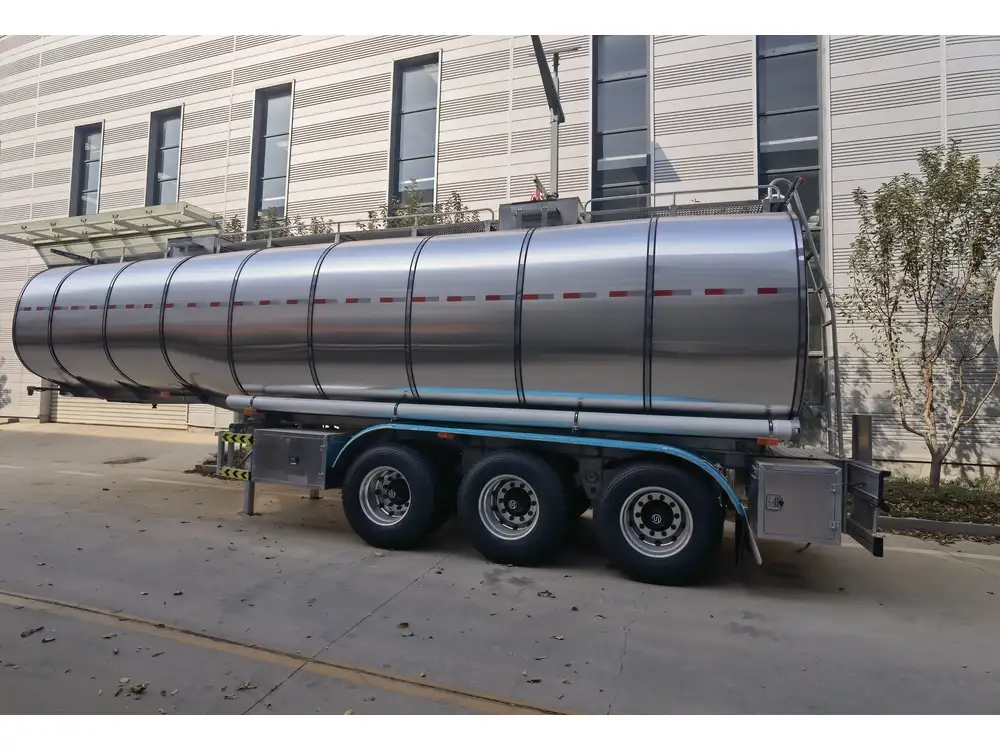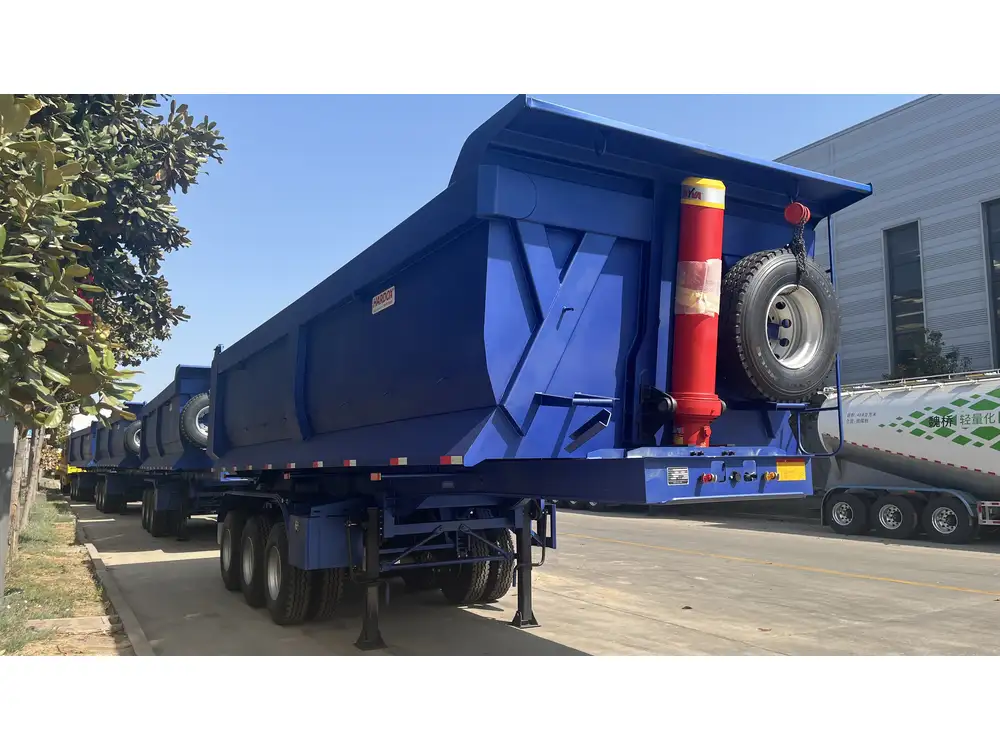Understanding Semi-Trailer Weight Limits
When it comes to transportation, the weight of a semi-trailer plays a pivotal role in logistics efficiency and safety. Knowledge of weight regulations is essential for manufacturers, drivers, and fleet managers alike. The United States Department of Transportation (DOT), along with state transport agencies, sets forth specific regulations dictating the maximum allowable weight for semi-trailers. This article delves deep into these regulations, presenting a comprehensive overview of weight limits and the factors influencing them.
Federal Weight Regulations
The Federal Motor Carrier Safety Administration (FMCSA) is the primary regulatory body enforcing weight restrictions on commercial vehicles. Most notably, the federal law delineates the maximum weight limits established under the Surface Transportation Assistance Act of 1982. Key points include:
| Category | Maximum Weight |
|---|---|
| Gross Vehicle Weight (GVW) | 80,000 pounds |
| Maximum Axle Weight | 20,000 pounds (single axle) 34,000 pounds (tandem axle) |

Gross Vehicle Weight (GVW)
Gross Vehicle Weight (GVW) sums the weight of the vehicle, any cargo, and the driver(s), representing the total weight a commercial vehicle can legally carry on highways. The GVW limit for a semi-trailer is generally capped at 80,000 pounds, emphasizing the critical balance between transportation efficiency and road safety.
Axle Weight Distribution
Axles are typically grouped into categories based on their configurations:
- Single Axle: Defined as one axle set with one pair of wheels, usually restricted to a maximum weight of 20,000 pounds.
- Tandem Axle: Comprised of two axles close together, which can support up to 34,000 pounds.
Distributing weight evenly across axles is crucial for enhanced road stability and minimizing the risk of accidents.
State-Specific Weight Limits
While federal regulations establish base weight limits, individual states may impose additional restrictions. Variations can arise from local road conditions, infrastructure integrity, and traffic patterns. Consequently, it’s essential for operators to familiarize themselves with state-specific limitations.

Examples of State-Specific Variations
| State | GVW Limit | Specific Restrictions |
|---|---|---|
| California | 80,000 pounds | Mandatory permits for loads exceeding 80,000 lbs |
| Texas | 85,000 pounds | Additional weight allowed for specific vehicle types |
| Florida | 80,000 pounds | Trailers must not exceed 48 feet in length |
Factors Influence Weight Regulations
Trailer Configuration
Trailer type and configuration have significant implications for weight limits. For example, a standard flatbed trailer typically carries less weight than a lowboy trailer, which allows for the transport of heavier machinery due to its design that distributes weight over a larger area.

Load Type
The nature of the cargo being transported can further influence weight regulations. Different types of cargo may necessitate specific axle configurations, influencing a semi-trailer’s loading capacity.
- Liquid Loads: Require careful consideration due to the shifting nature of liquid cargo.
- Bulk Materials: Like gravel or soil may impose additional weight distribution challenges compared to uniform cargo like pallets.
Equipment and Design
Advancements in trailer design, including materials and engineering techniques, enable some modern semi-trailers to handle higher weights safely and efficiently. Reinforced frames and specialized suspension systems can enhance load-bearing capability.
Special Permits and Weigh Stations
When exceeding standard weight limits, special permits are necessary. These permits are issued at both the state and sometimes local level, and allow semi-trailers to legally carry heavier loads on designated routes.

Importance of Weigh Stations
Weigh stations are strategically placed across highways to ensure compliance with weight regulations. They serve as checkpoints where commercial vehicles are required to stop for weighing. Failing to comply can lead to fines and potential damage to infrastructure over time.
Advantages of Adhering to Weight Regulations
Adhering to weight regulations is not merely a legal obligation but also presents several operational advantages:
- Safety: Overloaded semi-trailers significantly increase the risk of accidents, leading to injuries and fatalities.
- Fuel Efficiency: Operating within weight limits optimizes fuel consumption as overloaded vehicles face increased resistance.
- Vehicle Longevity: Regular compliance with weight regulations extends the lifespan of trailers by minimizing wear and tear on mechanical elements.
- Reduced Legal Risk: Abiding by local and federal weight restrictions cultivates a solid reputation and diminishes exposure to legal repercussions.
The Future of Semi-Trailer Weight Regulations
Regulatory frameworks concerning semi-trailer weights will likely evolve alongside advancements in technology. As logistics and transportation innovate—particularly with the integration of AI, IoT, and advanced materials—one might expect shifts in conventional weight limits. For example, the future might see:
- Dynamic Weight Limits: Utilizing real-time data, regulations could adapt to various factors, such as weather and route conditions.
- Enhanced Monitoring Technologies: Smart technologies to continuously monitor axle weights and alert drivers to overloading issues before reaching weigh stations.

Conclusion: The Imperative of Compliance
Understanding and adhering to maximum weight regulations for semi-trailers is crucial for manufacturers, drivers, and logistics companies. Knowledge of both federal and state regulations empowers stakeholders to safely and efficiently conduct transportation operations.
In essence, succeeding as a manufacturer or operator in the semitrailer industry necessitates a nuanced understanding of weight limits, regulatory landscapes, and the implications of these regulations on logistics efficiency. By prioritizing both safety and compliance, stakeholders can optimize their operations, ensuring longevity and efficiency in their business model.
Resources for Further Information
For more detailed information regarding semi-trailer weight limits, consult the following resources:
- Federal Motor Carrier Safety Administration (FMCSA)
- American Association of State Highway and Transportation Officials (AASHTO)
- State-specific Department of Transportation websites depending on your location.
In essence, staying informed about the regulatory framework governing semi-trailers not only facilitates smoother operations but also fosters a safer and more reliable transportation network. Your business, its reputation, and the well-being of all road users depend on it.



